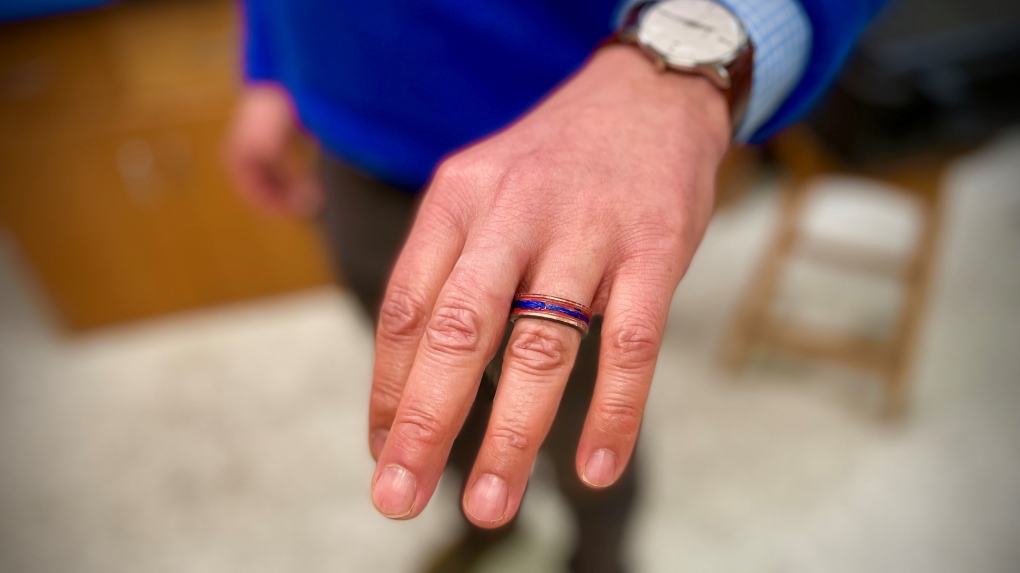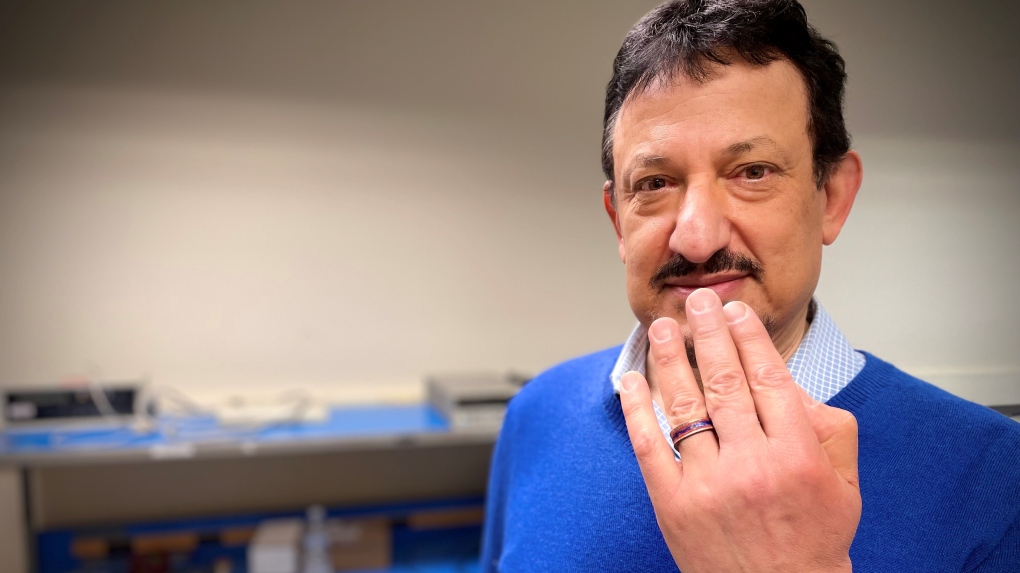University of Waterloo engineers create jewelry that can monitor your health
Engineers at the University of Waterloo have invented an antenna that's small enough to fit into a ring and is capable of monitoring your health in a non-invasive way.
It can be worn like a piece of jewelry and safely sends medical-related information to a smartphone or health clinic through airwaves.
It’s the first step in creating a device that can be used for non-invasive medical sensing applications, like monitoring blood and oxygen levels, or tracking disease progression. Early detection is a benefit, explained Omar Ramahi, the lead researcher for the device.
“That’s actually the best way for prevention aside from diet, exercise [and a] healthy lifestyle,” Ramahi, a UW electrical and computer engineering professor, said.
The hope is that with constant monitoring the device could provide more accurate readings, compared to a short snapshot in time at a doctor’s office where nervousness could cause blood pressure to rise.
“If we can take health care, or at least monitoring health care science, out of the doctor’s office, I think it will be much better for all of us,” Ramahi said.
 Omar Ramahi, the lead UW researcher for the device, shows off the ring with his tiny medical antenna inside. (Spencer Turcotte/CTV Kitchener)
Omar Ramahi, the lead UW researcher for the device, shows off the ring with his tiny medical antenna inside. (Spencer Turcotte/CTV Kitchener)
The team is currently focused on combining the use of antennas and sensors to transmit data to a database that stores information. But they're also interested in more than just medical data.
“I would say with the lifestyle of humans [too]. And the next thing is to test it with some sensors that will be built and integrated with this ring,” he told CTV News.
The team is also expanding their jewelry tech beyond rings.
“We have a very attractive, actually very nice-looking bangle. And it competes with Gucci, and Chloé and Christian Dior,” he joked.
They may not be the most fashion-forward, but it is at the forefront of technology.
The team hopes the device will allow people to know more about themselves than ever before.
Must Watch
Top Videos
CTVNews.ca Top Stories

Thousands of structures destroyed in L.A. County's most destructive fire
A series of wildfires tore through densely populated parts of the Los Angeles, Calif. area. Five people have been reported dead. U.S. Gov. Gavin Newsom said thousands of resources have been deployed to contain the fires.
Is the Hollywood sign on fire?
As fires scorch Los Angeles, fake images and videos of a burning Hollywood sign have circulated on social media.
U.S. Supreme Court rejects Trump's bid to delay sentencing in his New York hush money case
A sharply divided U.S. Supreme Court on Thursday rejected president-elect Donald Trump's final bid to put his New York hush-money case on hold, clearing the way for him to be sentenced for felony crimes days before he returns to the presidency.
Ex-Trump adviser says Canada in 'difficult position' amid tariff threat, Trudeau resignation
In the face of a potential tariff war, U.S. president-elect Donald Trump's former national security adviser John Bolton says 'Canada is in a difficult position' in part due to Prime Minister Justin Trudeau's resignation and a looming general election.
PM Trudeau says he thinks Trump is using talk of Canada becoming 51st state to distract from tariff impact
Prime Minister Justin Trudeau says he thinks U.S. president-elect Donald Trump is drumming up drama on Canadian statehood to detract from tariff talks.
Canadian travellers now require an ETA to enter U.K. Here's what to know
Starting Jan. 8, Canadians visiting the U.K. for short trips will need to secure an Electronic Travel Authorization (ETA) before boarding their flight, according to regulations set out by the U.K. government.
'True when I said it, true today': former Canadian PM Harper pushes back against Trump on social media
Former prime minister Stephen Harper doesn’t find U.S. president-elect Donald Trump’s jibes about Canada becoming the 51st U.S. state very amusing.
Poilievre says the next Canadian election will be about the carbon price
Pierre Poilievre returned to Ottawa on Thursday after the holidays with a familiar demand for Justin Trudeau: call a carbon-tax election.
More than 150 students sick at University of Guelph, says public health
More than 150 cases of gastroenteritis have been reported at the University of Guelph.























































